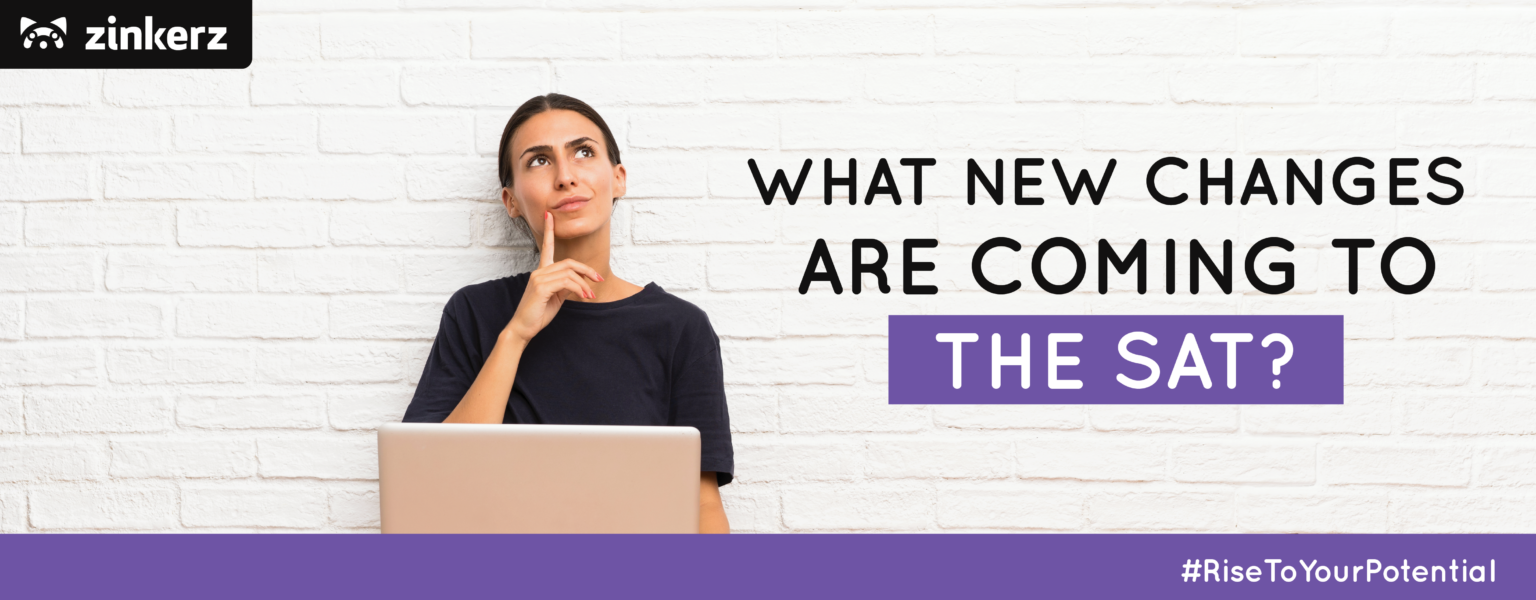In late January, the College Board dropped a huge announcement: big changes are coming to the SAT. Whether it’s through our intensive one-on-one test prep classes or multi-hour marathon study sessions, Zinkerz strives to ensure that each and every one of our students is fully prepared for their standardized tests. We’re also committed to keeping students up to date on the changing landscape of test preparation. If you’re a high school student looking to take the SAT in the next few years, you likely have a million questions about what to expect on the new version on the test. We’ll walk you through what we know so far, what is still unclear, and how you can continue to prepare for the SAT.
When will the changes be implemented?
First thing’s first, let’s talk about when you can expect to see changes to the SAT and who is expected to be taking the newly redesigned test.
| Location | Start Date | Who will take it first? |
| International test centers | Spring 2023 (March test) | Current 10th or 11th graders (depending on when you start the school year). |
| United States test centers | Spring 2024 (March test) | Current 9th graders |
For students living outside the United States who are currently in the 11th grade, whether or not you will take the new version of the SAT will depend on where you live and when you start the school year. If you will start your final year of high school around August or September 2022, you will not have to take the new SAT, as you will need to have your test results ready for your college applications before the new version of the test is even offered. However, if you will start 12th grade in January, February, or March 2023, you will have to take the new version of the test.
What will stay the same?
It’s important to note that not everything on the new SAT will change. While a lot of aspects of the test are being altered, some parts will remain the same. So, that being said, what aspects of the current SAT will remain as they are now?
Total score – The test will continue to be scored out of 1600.
Scoring scale – Test results will still be weighed the same as they are now. A 1400 on the current test will be worth the same amount as a 1400 on the new version of the test.
Testing sites – Testing sites for the SAT will remain the same as before. There will be no at-home option.
Subjects tested – While the content is changing, the subjects themselves – English and math – will remain the same.
Answer format – You will still answer the questions on the test through either multiple choice or grid-ins.
What is new?
This is the big question on everyone’s mind. What about the test will change from its current iteration?
Digital format – As was announced back in 2021, students will be able to take the test on a laptop or on a tablet. They will also have the option to borrow a device from the test center if they are unable to bring their own.
Structure – The new test will be entirely adaptable, meaning the questions will become more difficult if a student is doing well and easier if they are answering questions incorrectly. Each student’s test-taking experience will be unique.
Sections – The test will change from having four sections (Reading, Writing and Language, Math with Calculator, and Math with No Calculator) to only having two sections (English and Math) with one break in between.
Test duration – The length of the test will be shortened drastically, from the current 3 hours to only 2 hours.
Score availability – Rather than waiting weeks for their scores to be returned, students will be able to receive their scores within days of taking the SAT.
Time Management – While there will still be proctors for the SAT, the application used for the SAT will have a timer, allowing students to better keep track of their time. Students will also have more time per question.
English content – Rather than five long reading passages and four long writing passages, the new version of the English test will provide a greater amount of passages that are shorter in length. The range of subjects covered in the reading passages will expand beyond the current literature, history, and science-related topics to incorporate a broader range of university-level texts. While they will be included in one section, there will still be both reading and writing questions on the test. Graph and table questions will also still be included.
Math content – While we are not sure what exactly will be on the math portion of the new SAT, the College Board has announced that it will have a “broader range of topics.” Another huge change is that the exam will do away with the no calculator portion of the test altogether, allowing students to use their calculator throughout the exam. Grid-ins will also change from five spaces to 5-6 spaces, depending on whether answers are positive or negative.
About the software for the test
At this point, no one knows exactly what the new SAT will look like. But, we do have some ideas, based on what the College Board has announced.
The application used to take the SAT will be downloadable onto the test-taker’s device. To avoid cheating on the test, it will lock in full screen mode. While the test does require internet, it will save periodically throughout the test. Therefore, if a student’s computer freezes, runs out of battery, or their wifi disconnects, they will be able to return to the part of the test they left off at without losing their answers.
The application will also include a variety of tools for students to utilize on the test. These will include, but will not be limited to, a built-in graphing calculator, annotation tools, a timer, and a bookmark to mark questions to review later on.
Things we still don’t know
The exact content of the test – While we know both the English and math portions will be expanded to include more topics, as of right now it’s unclear what these new topics will be.
Superscoring – Right now it’s unclear whether or not the new version of the SAT will allow students to superscore their test results (meaning pick their highest test scores from each section across multiple test sittings to raise their overall score).
Start times – It’s also unclear whether students will be able to start their tests at different times or if they must all start at the same time.
What can you do to prepare?
As you can see, there is still a lot about the new SAT that remains a mystery. Some students may be tempted to pause their SAT practice until they can see the contents of the test. However, as the official practice material for the new SAT will likely not be released until September or October 2022, waiting could cost you valuable preparation time. Since the questions on the current SAT will most likely still be on the new rendition of the test, the best thing you can do right now to prepare is continue the study methods you have been using with the material from the current test.
We at Zinkerz want you to feel fully prepared to take on the SAT. If you’re looking for a way to get a head start on your SAT prep, the one-on-one lessons with our education experts and SAT prep marathons are a great way to maximize your test preparation, no matter what changes lie ahead. Keep an eye out for future blog posts from us to learn more as additional news unfolds!
Written by Catherine Meehan



